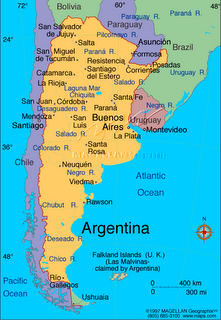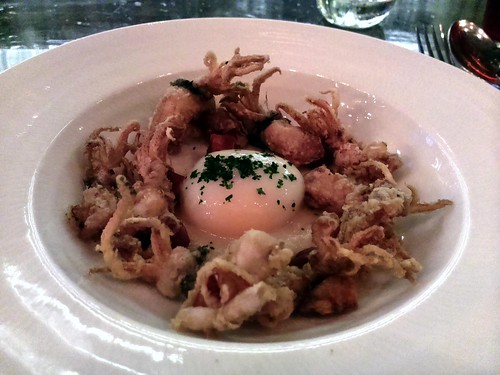Ireland is particularly blessed with some incredible prehistoric passage tomb cemeteries,
Carrowmore and Carrowkeel in Sligo, the famous Brú na Bóinne (Bend of the Boyne) sites including Newgrange, Knowth and Dowth, and this one, Loughcrew near the village of Oldcastle in County Meath. Passage tombs are named after the passageway that generally leads to a burial chamber covered by a circular mound. The mound may be of earth like the examples at Newgrange or Knowth, or stone cairns like this example at Loughcrew. The passageways are generally narrow, lined with orthostats (upright slabs) and roofed with lintels (flat slabs).
The most striking features of the archaeological landscape of Loughcrew
are the three large cairns that dominate the summit of three steep hills, Patrickstown, Carnbane West and Carnbane East. It is Carnbane East that is most visited as it has the largest of the tombs, Cairn T, that appears to be the focal point of the whole cemetery.
Cairn T dates back to approximately 3000 BC. On the summit of Carnbane East, Cairn T is surrounded by a number of smaller tombs. The large cairn measures around 35m in diameter and this passage tomb has a cruciform shaped chamber and some of the finest examples of Neolithic art in Ireland. If you visit during the Autumn or Vernal (Spring) equinox you can witness sunlight entering the chamber to illuminate the inside of the tomb.
Entering the tomb itself is an incredible experience, the passageway is lined with large orthostats that display intricate carvings, wherever you look you see spirals, lines, lozenges, zigzags, circles and cup marks.
The artwork was embedded into the stones by picking, pecking and incising with a harder stone tool, and often uses the natural contours of the stone as design features. Many of the symbols at Loughcrew are found at the other passage tomb sites in Ireland.

What all these symbols mean is difficult to ascertain, some believe that they represent the artwork produced during states of altered consciousness, perhaps through shamanic ritual or consumption of mind-altering mushrooms or herbs.
Perhaps they were abstract representations of astronomical features, or perhaps simply abstract art (though as the symbols appear regularly at a number of passage tomb sites from this period surely the symbols had real meaning).
I think that looking at the spectacular equinox stone, that the symbols look to be representing natural plants, fruits, ferns and flowers. Perhaps the famous spirals and circles of megalithic art represent tree rings, a visible marker of the passing of time for these Neolithic farmers.
 |
| Sunlight illuminates this beautifully decorated Equinox Stone at the Autumn and Spring Equinox |
If the depictions on the equinox stone are plant life, it makes sense in a way that these symbols are illuminated at the Spring equinox when the land begins to come to life again, and the Autumnal equinox when the rich bounty of the land can be harvested.

I must state though, these are just theories. To paraphase the famous archaeologist George Eogan, who excavated the passage tomb at Knowth, we can never discover what any of the artwork truly means as it is impossible for us to known the minds and emotions of a people who did not know how to write and who are separated from us by 4000 years.
 |
| A decorated lintel stone above one of the chambers, see how they used the natural contours of the rock as part of the design |
The Hag's Chair is one of the kerbstones that surround Cairn T, it displays megalithic art but unfortunately the carvings are very difficult to make out today, though you can just about make it out in the picture below. More clear is the cross inscribed on the seat, it possibly represents the use of the stone as a Mass Rock during penal times. It was possibly also used as a ceremonial or inauguration chair during the early medieval period.
 |
| The 'Hag's Chair', can you make out the megalithic art near the base of the stone? Circles, spirals and cup marks can be seen |
The Irish name of Loughcrew,
Slieve na Calliagh is thought to derive from
Sliabh na Cailli, – The Hill of the Witch. Folklore has it that the monuments at Loughcrew were formed when a witch called An Cailleach Bhéara, was challenged to drop an apron full of stones on each of the three Loughcrew peaks, if she succeeded she would be proclaimed the ruler of all Ireland. She was successful on the first two peaks, but missed the third and fell to her death. An early eighteenth century poem commonly attributed to Jonathan Swift recounts the tale:
Determined now her tomb to build,
Her ample skirt with stones she filled,
And dropped a heap on Carnmore;
Then stepped one thousand yards, to Loar,
And dropped another goodly heap;
And then with one prodigious leap
Gained Carnbeg; and on its height
Displayed the wonders of her might.
And when approached death’s awful doom,
Her chair was placed within the womb
Of hills whose tops with heather bloom.
Poem via the excellent
Voices from the Dawn website
Loughcrew is one of the most rewarding sites to visit in Ireland, and a true must-see for anyone who visits the Boyne Valley. In comparison to Newgrange, Loughcrew is rarely visited, and you can enjoy perhaps a more intimate experience with the Neolithic passage tomb builders. If you visit between the 30th May and 28th August you can avail of free guided tours by Office of Public Works staff (
see here for more details), if you visit before or after those dates you can get the key by leaving a deposit with
Loughcrew Gardens so you can enter the tomb yourself, it is such a wonderful experience I cannot recommend it highly enough. You will find Loughcrew at these co-ordinates 53.744672,-7.112483, about 3km south-east of Oldcastle off the R163 in County Meath (
see our map for more details).
There is a small carpark at the bottom of the hill, but no toilet or facilities are on site. Cairn T is at the summit of a steep hill, so please wear suitable footwear and follow the wooden directional stakes to the top. You will be rewarded by some spectacular views of County Meath as well as encountering a truly wonderful archaeological site.
I hope you enjoy this blog, we're trying to cover as many sites as we can across Ireland. If anyone has any suggestions about sites you'd like us to cover please do leave us a comment. If you enjoy information and images of Irish heritage sites then do follow us on
Facebook,
Twitter and
Google+ If you'd like to support us then please consider downloading an audioguide to one of Ireland's wonderful heritage sites. They are packed with original music and sound effects and are a great way of experiencing the story of Ireland. They only cost €1.99 and are fun whether you are at the site, or listening from the comfort of your own home. If you enjoy stories of the turbulent medieval period in Ireland try our guide to
Viking and Medieval Dublin, visit us at
www.abartaaudioguides.com for free previews and to download your free audioguide to the
Rock of Dunamase or the free audioguide to the wonderful
heritage town of Kells in County Meath
All photographs © Neil Jackman / abartaaudioguides.com  |
| More visitors enjoying the spectacular views from Loughcrew |









































